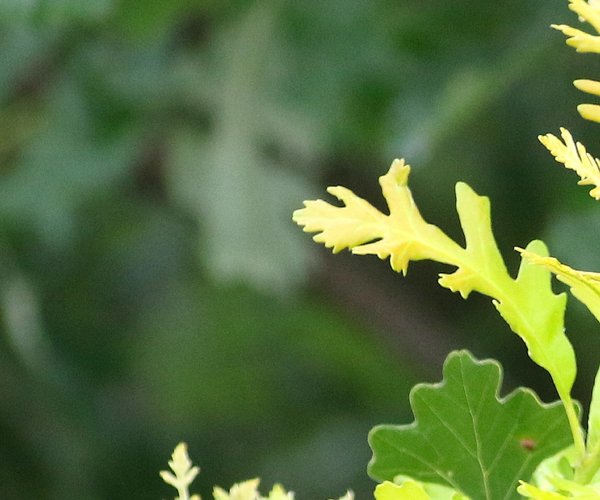One of the most read chronologies using tree rings occurs in Aldo Leopold’s book, “A Sand County Almanac,” published and first printed in 1949 by Oxford University Press.
Aldo Leopold, using a cross-cut saw, dropped a dead oak, which he used for heat. He determined the tree had 80 annual rings, the first being laid down in 1865. He used the date the oak died, the number of rings in the wood, and counted back to the trunk’s pith region and first ring. These rings in the wood (xylem tissue) are laid down by a meristem (growth producing) positioned between a tree’s wood and bark.
As Aldo Leopold and his chief sawyer (probably his wife) pulled the saw’s teeth into progressively deeper rings, he noted events, many conservation-related.

It should be noted that once the saw is into this circular oak trunk it quickly carries chips from the most recent rings as well as older and old rings, too. After all, the truck, as viewed from the end of a log, is series of rings encircled by other rings.
Then the sawyers get to the exact middle (diameter) of the trunk, chips will come from all 80 of the rings during the next several pulls. Then the reverse chronology occurs as the sawyers cut the lower half of the trunk diameter, eventually getting to the bottom and only most recent ring again as the saw completes its cut.
Rings, but not dates, again were famous when Arthur Koehler, a xylotomist (wood guy) at the US Forest Products Laboratory, Madison, Wisconsin, matched growth rings from ladder rail boards to attic floorboards, eventually resulting in convicting Bruno Richard Hauptmann of kidnapping and murdering Charles Lindbergh’s son Charles Lindbergh Jr, March 1, 1932.
The tree rings, actual years assigned to particular rings seems to put everything in perspective as one sees a ring of wood that was formed by the tree during a precise year. As an example deer hunting backtags were first required in 1942 and then when they were discontinued (2016). Picture this in an oak slab.
Displays of giant sequoia tree trunk slabs, some dating back 1,000s of years are impressive to say the least while seeing the actual wood formed in 1492 when ships touched the east US coastline.
A living tree, with a deer rub on one side could be cut down and examined to determine when that deer put his antlers to the trunk and scraped the bark clean to the meristem killing a portion on one side, and eliminating that portion of the tree rings.
That same technique was used to determine the year a tree was burned on one side by a fire to destroy a body of a person murdered. A person was convicted.
Because there are variations within a ring, sometimes it is possible to pinpoint whether the meristems was injuring in winter, May or September. That may require a razor-thin section and a microscope, but dating annual rings could be done using a chainsaw or even an axe. A hand lens could be helpful and likely more believable when presented to a judge or jury.
Injuries to trees due to injuring the meristem between the wood and bark are most likely when tree (wood) growth is most active, June through August. This is apparent to those who have bumped a small tree with a lawn mower.
A strong oak tree along a county road leading into Blanchardville, Wisconsin was hit by a vehicle, and the driver killed six or seven decades ago. Want the actual date to confirm the cemetery stone being accurate? Give me a saw and hand lens, and I may be able to say with near certainty.
Or need to know when a maple woods was last tapped for sap? Again, “ask” a tree. Even a buried broadhead stuck into a pine tree trunk might be able to be dated.
How about a tree injury by a bullet during the 2024 gun deer season? That may take some doing but if it is really important ask a xylotomist and that, too may stand up in court just as Bruno Richard Hauptmann found out in 1936. He died by electric chair at age 36.
The deer seasons are wrapping up with 315,683 deer registered; 160.728 were antlered and 154,955 antlerless. Muzzleloader hunters registered 7,821, while 8,208 were taken during the four-day antlerless season. During the Holiday Hunt 4,533 deer were registered.
Turkey hunters have registered 4,093 birds at this point in the fall season.
The early, catch and release inland trout season opened January 4, 2025, will close May 2, 2025, the day before the regular trout season opens.
Spring turkey permit cards have been mailed and left over permits will be sold beginning March 17 with Zone 1.
Contact Jerry Davis, a freelance writer, at sivadjam@mhtc.net or 608.924.1112





